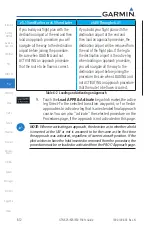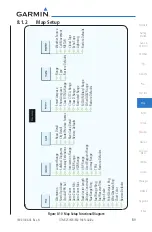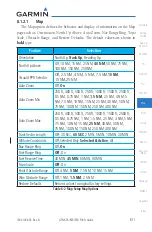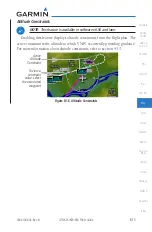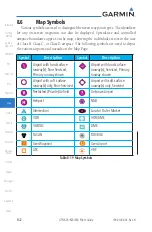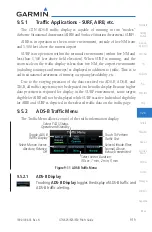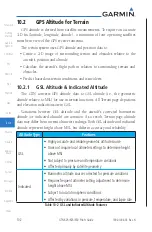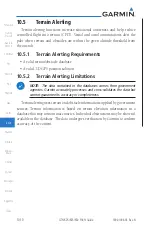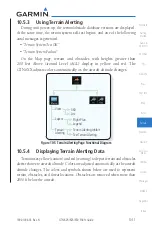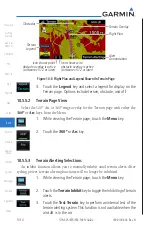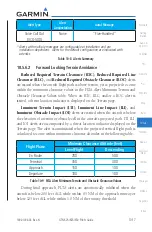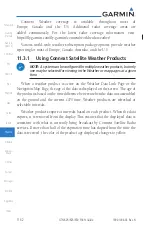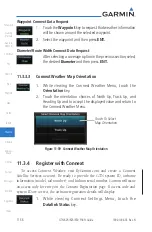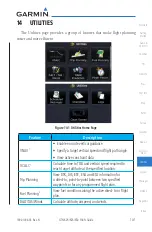
10-2
GTN 625/635/650 Pilot’s Guide
190-01004-03 Rev. N
Foreword
Getting
Started
Audio &
Xpdr Ctrl
Com/Nav
FPL
Direct-To
Proc
Wpt Info
Map
Traffic
Terrain
Weather
Nearest
Services/
Music
Utilities
System
Messages
Symbols
Appendix
Index
10.2
GPS Altitude for Terrain
GPS altitude is derived from satellite measurements. To require an accurate
3-D fix (latitude, longitude, altitude), a minimum of four operating satellites
must be in view of the GPS receiver antenna.
The terrain system uses GPS altitude and position data to:
• Create a 2-D image of surrounding terrain and obstacles relative to the
aircraft's position and altitude
• Calculate the aircraft's flight path in relation to surrounding terrain and
obstacles
• Predict hazardous terrain conditions and issue alerts
10.2.1 GSL Altitude & Indicated Altitude
The GTN converts GPS altitude data to GSL altitude (i.e., the geometric
altitude relative to MSL) for use in terrain functions. All Terrain page depictions
and elevation indications are in GSL.
Variations between GSL altitude and the aircraft's corrected barometric
altitude (or indicated altitude) are common. As a result, Terrain page altitude
data may differ from current altimeter readings. Both GSL altitude and indicated
altitude represent height above MSL, but differ in accuracy and reliability.
Altitude Type
Features
GSL
• Highly accurate and reliable geometric altitude source
• Does not require local altimeter settings to determine height
above MSL
• Not subject to pressure and temperature variations
• Affected primarily by satellite geometry
Indicated
• Barometric altitude source corrected for pressure variations
• Requires frequent altimeter setting adjustment to determine
height above MSL
• Subject to local atmospheric conditions
• Affected by variations in pressure, temperature, and lapse rate
Table 10-2 GSL and Indicated Altitude Features



